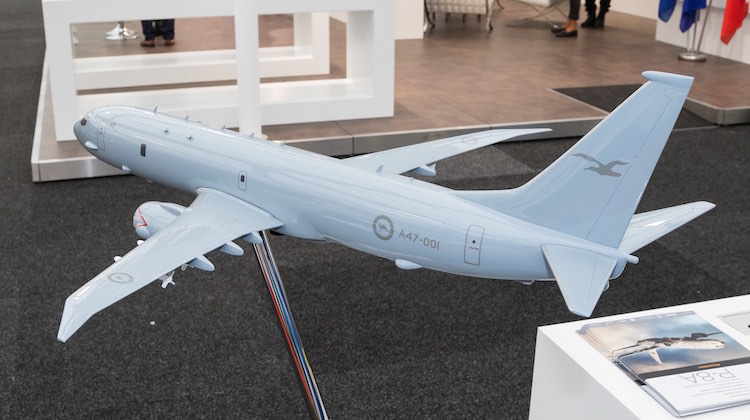 Boeing expects to reach the full production rate of 18 P-8A Poseidon maritime surveillance aircraft a year in 2016 as Australia gets ready to accept the first of eight of the type on order.
Boeing expects to reach the full production rate of 18 P-8A Poseidon maritime surveillance aircraft a year in 2016 as Australia gets ready to accept the first of eight of the type on order.
Components of the RAAF’s first P-8A are already in production with the fuselage for ‘Aussie 01’ due to begin final assembly in early 2016 and the first flight expected mid-year.
Australia confirmed an order for eight Poseidon aircraft in February 2014 with options for four more. The first four aircraft are in various stages of pre-production while the next four have been contracted for advanced procurement, according to Boeing Military Aircraft director of business development for maritime projects James Detwiler.
“When the LOT VII contract is signed next year they will have all eight officially on contract,” Detwiler said at Pacific 2015 on Wednesday.
To date, Boeing has delivered 36 P-8s. The US Navy has received 29 P-8As while India has seven P-8Is and is due to take an eighth before the end of 2015.
The P-8A is based on the Boeing 737-800 commercial. The fuselage is built at Sprit AeroSystems as a dedicated P-8A alongside the commercial 737 fuselages in Wichita, Kansas with assembly on a specific P-8A line at Boeing’s 737 factory in Renton, Washington State. Mission and sensor systems are installed at Boeing Field, near Seattle.
As well as some design changes to cater for military operations, the P-8A features a raked wingtip rather than the blended winglet seen on the 737 to integrate de-icing on the leading edge all the way to the tip to combat cold weather conditions during anti-submarine warfare operations.
Commonality with the commercial Boeing 737 extends to training as well as the sourcing of spare parts – P-8A pilots first obtain a commercial type rating for the 737 and then go through a “differences training” course that lasts for a few weeks.
“As various international potential customers look at commercial synergies with an installed base of commercial 737 Next Gen commercial aircraft, they realise there are tremendous savings opportunities.” Detwiler said.

“This aircraft has such a low cost per hour and with the common spares pool for those high-use items such as wheels and brakes, those are all commercial common. That was designed into the aircraft. It is the same thing with the powerplant. The GE-CFM56 engine core is identical to the other 8,000 or so engines in commercial service today so today there’s a huge sparing pool and parts pool that they can tap into.”
On Boeing’s expectation that it will achieve its full production rate of 18 aircraft in 2016, he explained: “Every other month we will deliver two aircraft to make that 18. We are somewhere in the transition between 12 and 18 at the moment.”
Detwiler says figures from the US Navy show the program has achieved US$2.1 billion in savings through production efficiencies and the steady ramp up in production.
“We’ve drastically reduced our production times, learning curves and that sort of thing.”












